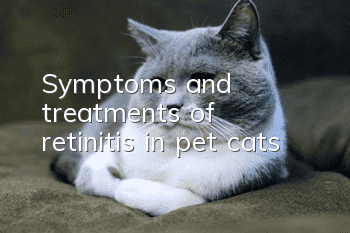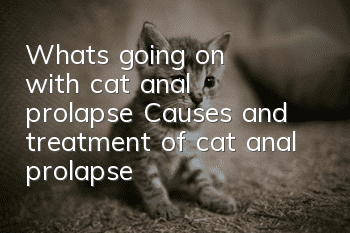Symptoms and treatments of retinitis in pet cats

The vision of cats with retinitis will be affected to a certain extent, and in severe cases, they may become blind. The disease is usually characterized by retinal tissue edema, exudation and hemorrhage. It is usually secondary to choroiditis, leading to chorioretinal inflammation.
Causes are divided into exogenous and endogenous. Exogenous: caused by bacteria, viruses, chemical toxins, etc. accompanying foreign bodies into the eye, or stimulated by parasites in the eye, causing choroiditis, chorioretinal inflammation, exudative retinitis, etc.; Endogenous: secondary to certain Infectious diseases, such as canine distemper, canine infectious hepatitis, leptospirosis, etc., occur when bacteremia or septicemia occurs. The pathogenic microorganisms are transferred to the retinal blood vessels through the blood, and septic lesions appear in the eye tissue, causing retinitis; this disease It may also be caused by an allergic reaction in local lesions.
What are the symptoms of cats suffering from retinitis
The causative factors of retinitis can be divided into exogenous and endogenous. Bacterial infection, foreign matter entering the eyes, and disease induction may all cause the disease. Even allergies are one of the causes of the disease. So if you suffer from retinitis What are the symptoms of cats? Let’s find out together.
The main clinical manifestations of this disease are central vision loss, central scotoma, and visual distortion. There were no inflammatory changes in the anterior segment and vitreous body. There are yellow-gray exudative lesions and hemorrhage in the macular area of the fundus, which are round or oval in shape, with unclear boundaries, slightly raised, and are approximately 1/4 to 3/2 of the optic disc diameter. It is more common with 1PD or less. There are arc-shaped or ring-shaped hemorrhages at the edge of the lesions, and occasionally there are spot-like hemorrhages arranged in a radial pattern. There is a pigment disorder zone around the lesion. Many cases are complicated by discoid superficial retinal detachment, and some have hard lipid exudation around them. Most lesions are centered on the fovea and have a radius within 1 PD.
At the end of the disease, yellow-white scars form in the macular area. Fluorescent fundus angiography shows that in the early arterial or arterial phase, there are granular, lace-like and other new blood vessel networks in various forms at the exudation focus. The bleeding area blocks fluorescence, and there is a ventilated fluorescent area at the upper edge of the bleeding area. In the later stage, fluorescein leaks from the new blood vessels to form a strong fluorescence area.
How to treat feline retinitis
Retinitis often causes the cat’s vision to decrease. If it is not treated for a long time, it will cause the cat to go blind, which will bring great inconvenience to the cat’s future life. Therefore, early detection and early treatment are the best ways to prevent cat blindness.
Retinal edema and poor transparency. At the beginning of the disease, yellow or blue-gray exudates appear under the retinal blood vessels, causing varying degrees of bulging or detachment of the retina in the affected area. Venous bleeding in the affected area, and small veins are bent due to expansion; optic nerve The nipple is congested, enlarged, and the outline is unclear. The edge of the nipple is unclear. If it progresses further, it will shrink, and the vitreous body will become turbid due to the invasion of blood. In the later stage of the disease, the blood vessels in the lesion will shrink, and the surface of the lesion will appear grayish white, light yellow, orPale yellowish-red mound-like bulges; yellowish-white cholesterol crystal deposition can be seen in chronic lesions.
In the later stages of retinitis, retinal detachment, atrophy, cataracts or glaucoma can occur. Systemic application of antibiotics and eye closure (antibiotics + procaine + dexamethasone) are used to control the development of inflammation. Treatment of the primary disease is very important at the beginning of the disease. In severe cases, the eyeball can be removed.
- What are some ways to choose cat food for Persian cats?
- Can pet cats be brought on the high-speed train?
- What happens if a cat is deficient in vitamins?
- How does the wound of a male cat heal after being neutered?
- What are the breed types of bobtail cats?
- Can cats drink yogurt? What impact does it have on cats?
- Introduction to the book "100 Meow Secrets Cat Owners Must Know"
- Kitten has black spots on his nose
- At what age can a cat be neutered?
- What diseases will happen to cats with folded ears?



